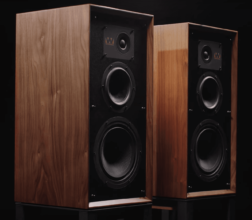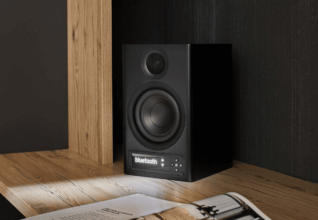Dynaudio focus 10 Speaker Review
What might sound like a contradiction is actually not one. The calming effect of the Dynaudio Focus 10 does not mean it lacks dynamism or excitement—quite the opposite. Dynaudio manages to strike a perfect balance with this speaker, which, by the way, can replace an entire audio system. But I’m getting ahead of myself. Tested at 5,000 Euros (per pair).
by Christian Bayer
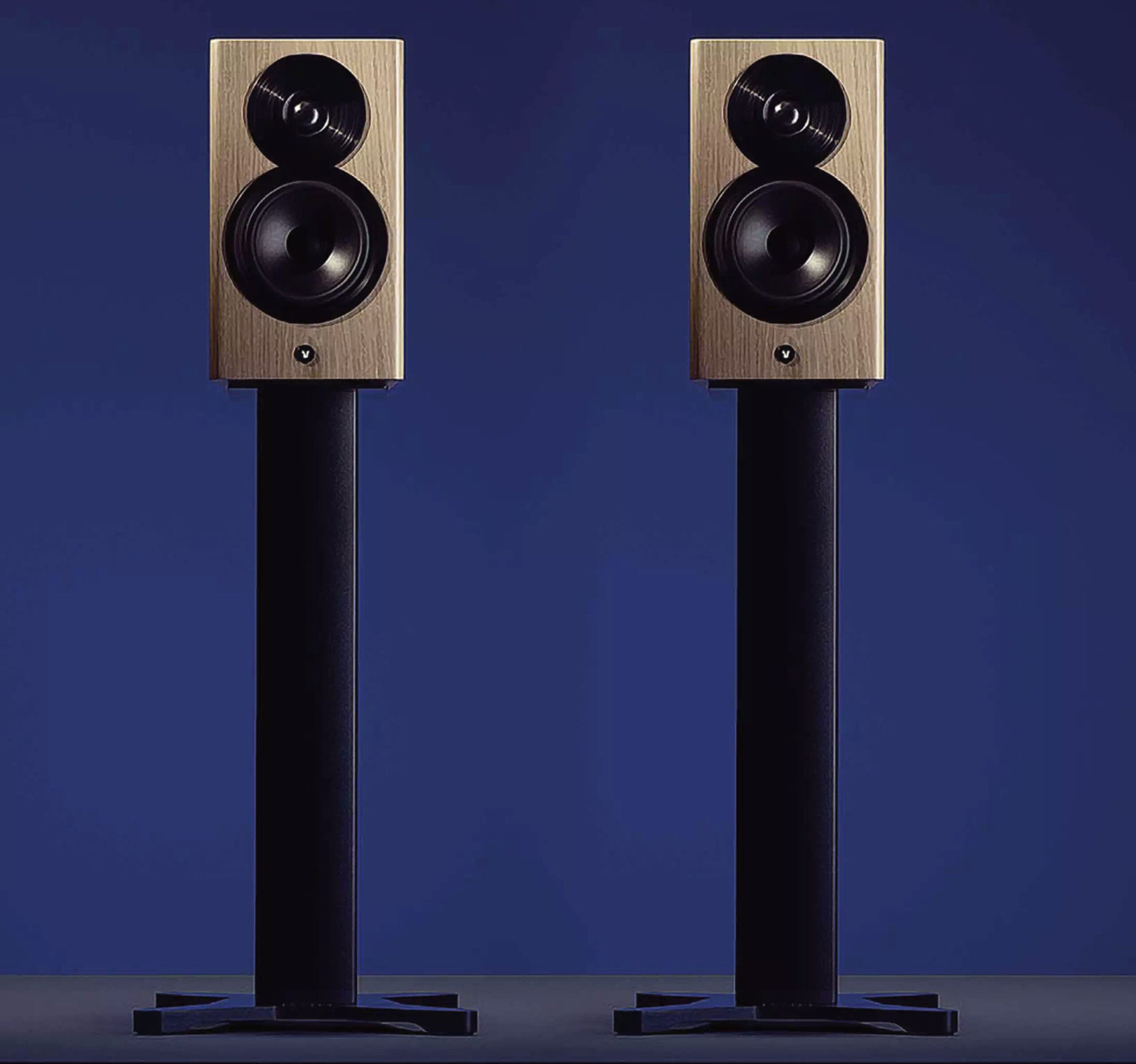
On the Dynaudio website for the Focus 10, it says: ‘Size cannot always be determined with a centimeter measure.’ And if any slogan has ever been true, it’s this one. The new Focus 10 may be the smallest active speaker in the series, but it performs so confidently and maturely that you quickly forget its size. How does it achieve this? Well, Dynaudio benefits from over ten years of experience gained from the previous Focus XD, Xeo, LYD, and professional Core models.
Build and Design
Let’s start with the essence: the Dynaudio drivers. If it weren’t for the illuminated Dynaudio logo on the front, the Focus 10 could easily pass as a classic passive speaker. The 14 cm Esotec+ mid-woofer with an aluminum voice coil benefits from the knowledge gained from developing professional models and the new Contour series. It has been further optimized for the Focus series, with a new surround and a neodymium double magnet extending the cone’s excursion—and you can hear the difference. The closed cabinet of the Focus 10 produces bass and dynamics that defy its size.

While experimenting with the app, I accidentally cranked up the volume too high, and though I was startled, the Focus 10 handled it with no issues and showed no signs of compression, even at such high volumes. Nothing would have happened anyway, as a special high-pass filter reduces woofer excursion at very high levels. Naturally, the driver is equipped with Dynaudio’s proprietary MSP (Magnesium Silicate Polymer) cone with an integrated dust cap. Its natural complement is the 28 mm Cerotar soft dome tweeter.
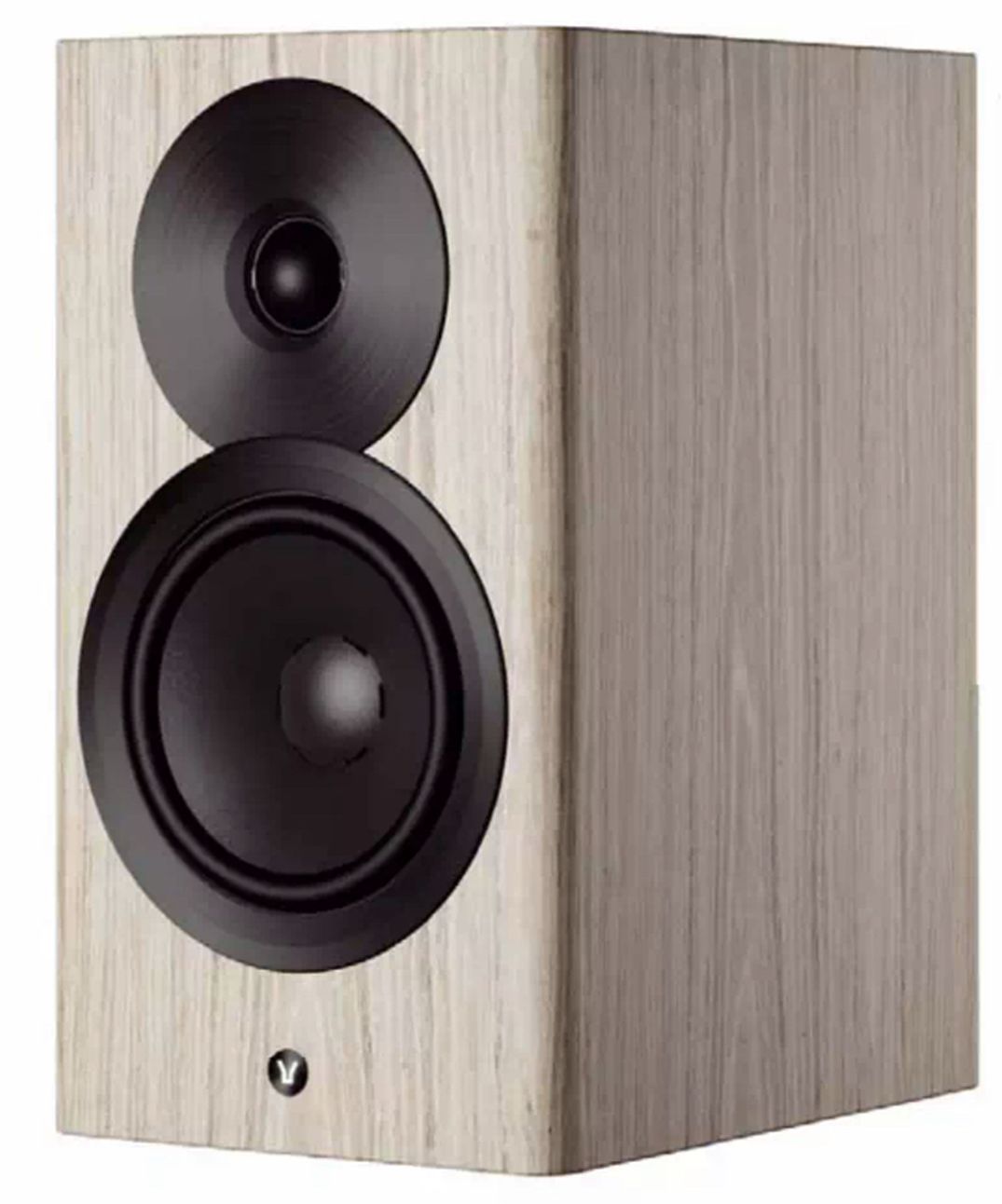
I find it delightful that Dynaudio calls the tweeter’s coating ‘DSR,’ Dynaudio Secret Recipe—no point in asking for more details. The Cerotar is also based on the core technologies of the Confidence, Special Forty, and Core series. This includes the Hexis inner dome directly beneath the membrane, which smooths the airflow behind the diaphragm, resulting in a particularly balanced frequency response without unwanted resonances. The optimized magnet system of the tweeter is equipped with Strontium Carbonate Ferrite+ Ceramic magnets to increase its sensitivity. All these measures together create the effect described at the outset: a highly dynamic yet fatigue-free listening experience.
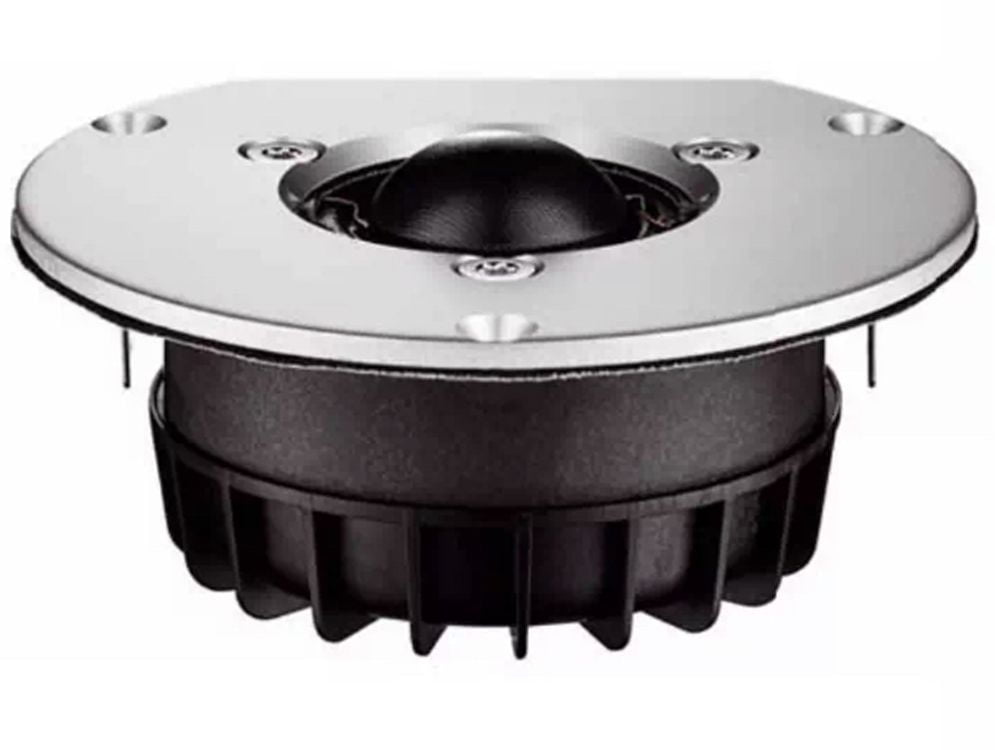
So far, so good, but the real highlight of the Focus 10 lies within the casing of the so-called ‘primary speaker,’ as the Danes advertise that with the Focus speakers, you’re essentially buying an entire audio system. I love Dynaudio’s slogan for this: ‘If you can get it online, you can stream it to Focus 10.’ And that’s not an exaggeration.
The Stream Unlimited modules are fully compatible with Spotify Connect, Tidal Connect, Apple AirPlay 2, Google Chromecast, and whatever else might be available, offering an almost endless selection of music. And even though streaming is the order of the day, it also works flawlessly from local NAS drives—all easily controllable via smartphone or tablet.
Additionally, with the analog inputs, you can connect your phono stage or CD player directly, expanding your software access further, even if that might not strictly adhere to analog purism. However, Dynaudio has made every effort to optimize the A/D and D/A conversion, ensuring that there are no noticeable sound compromises despite the lack of a true preamp.
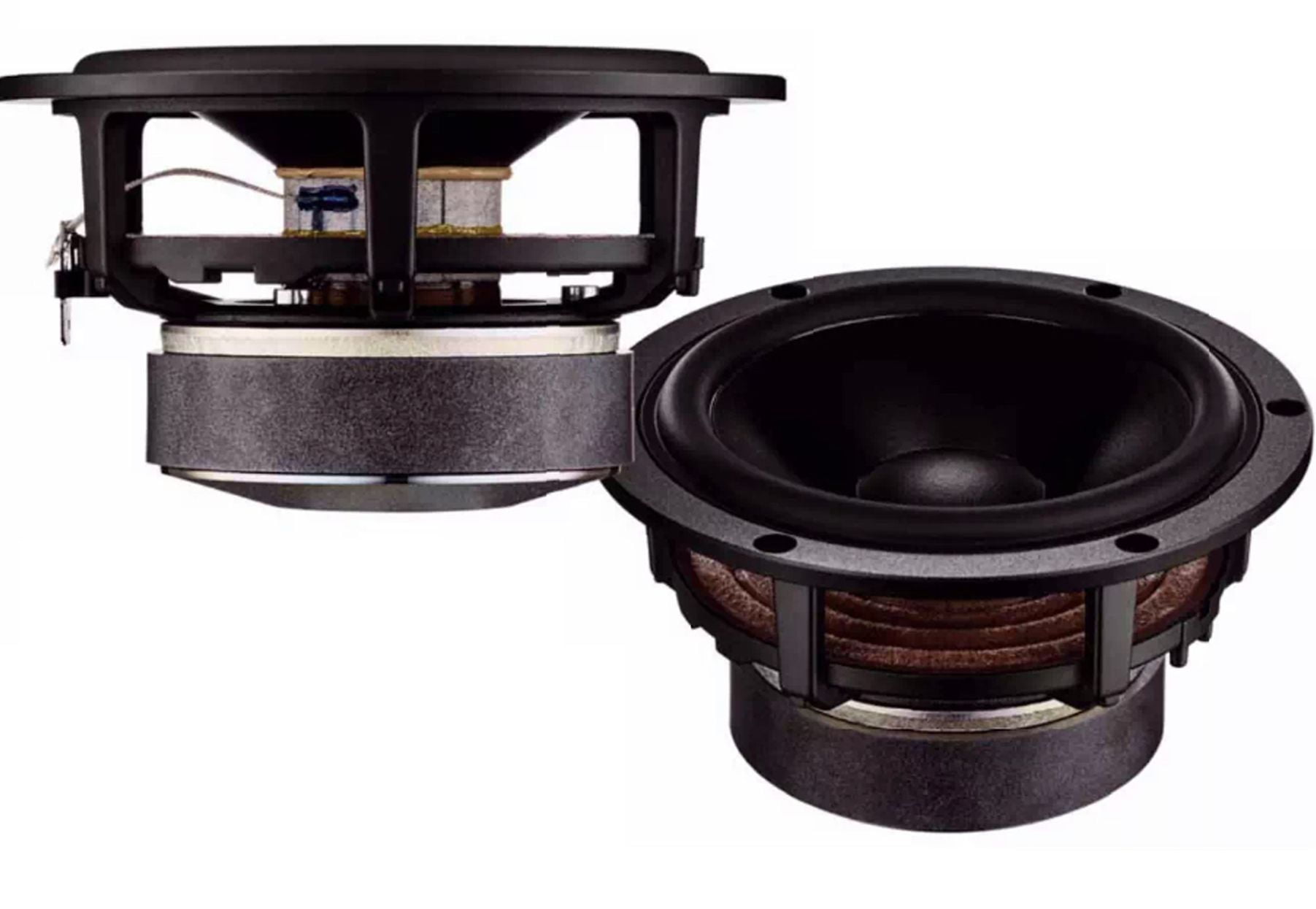
Dynaudio takes active operation very seriously, which is undoubtedly one of their core strengths and secrets to success. Both drivers are powered with true bi-amping for enhanced control and are managed with the help of a DSP.
Dynaudio has always been known for its understated elegance, and the Focus 10 continues this tradition. The speakers feature powerful modules from Pascal, delivering 110 watts for the high-frequency range and 280 watts for the low-frequency range. This is the same electronics used in their professional reference monitors from the Core series, along with the room calibration algorithms. The inclusion of Dirac-Live allows for precise room calibration, ensuring the sound is as close to the original studio recording as possible.
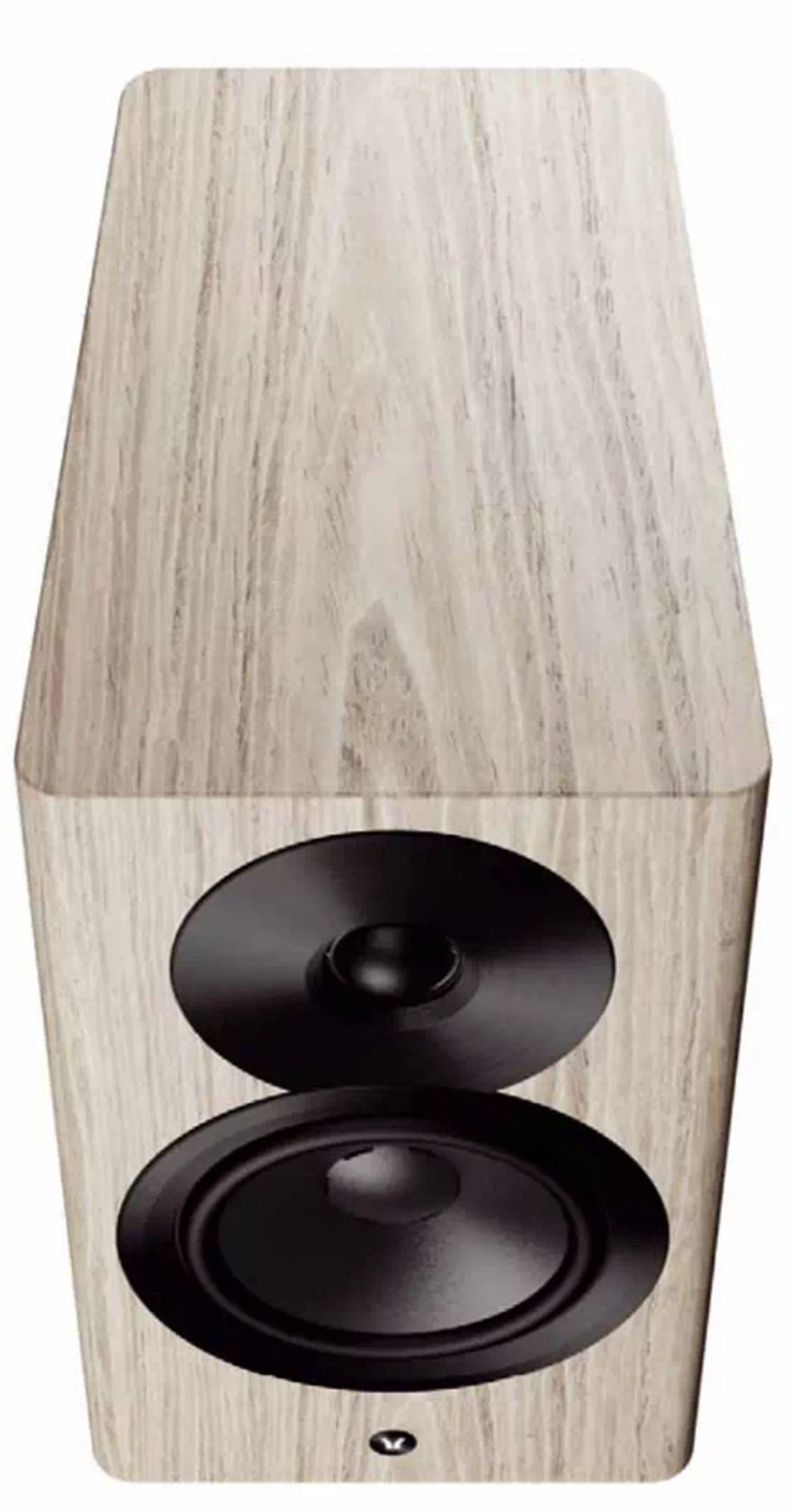
A unique feature of the Focus 10 is its magnetic grilles, which the speaker automatically detects. The equalizer settings adjust accordingly, indicated by a brief blue light on the status display. The integrated WiSA technology enables wireless connectivity with WiSA-compatible TVs or USB dongles, although the main focus remains on music listening.

The Dynaudio app, along with Roon2 and other apps, allows you to control the speakers wirelessly. Setting up the primary and secondary speakers takes a bit of time, but once configured, it provides an array of options to fine-tune the sound. The DSP is set at 48 kHz but can also operate at 96 kHz if preferred. Other features include an energy-saving mode, a child lock for volume, a high-pass filter option, and adjustable sensitivity for the analog input by +/- 6 dB.
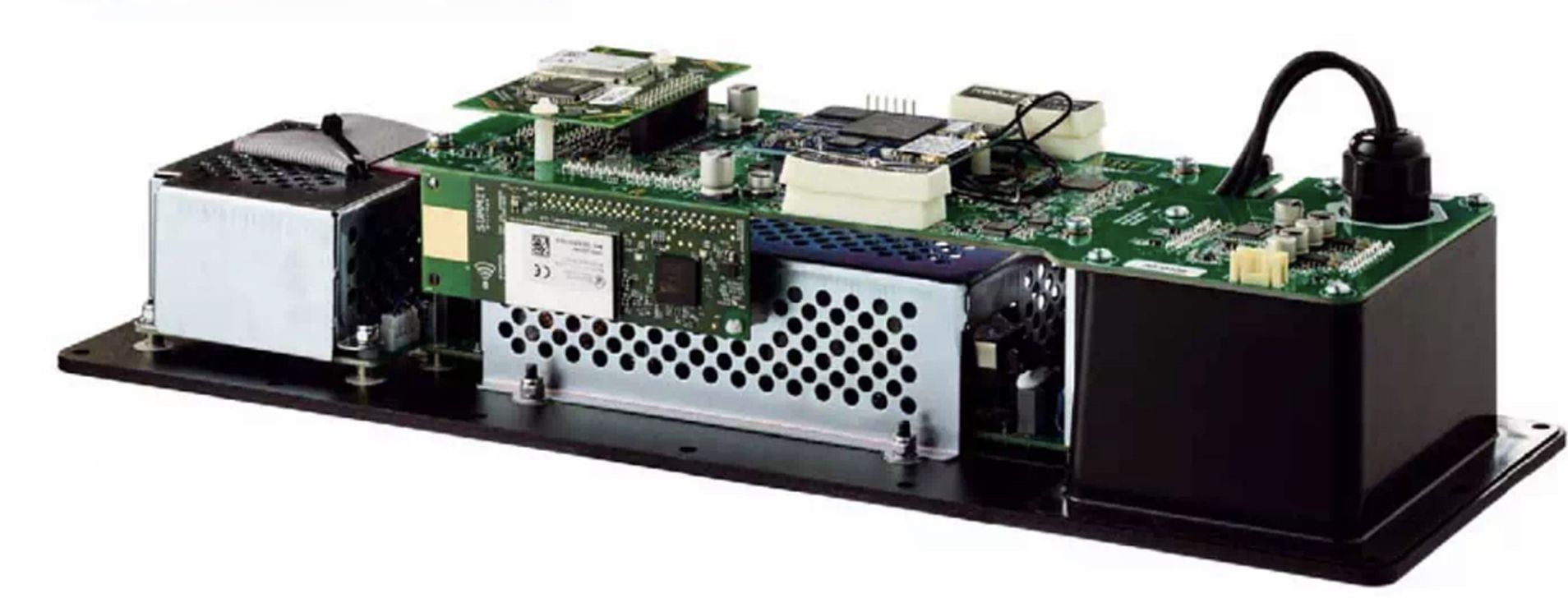
Despite the complexity of the Focus 10’s design, as highlighted by Dynaudio’s CTO Jens Lyne Petersen, the user experience is intuitive and seamless—exactly as it should be.

The “primary speaker” of the Dynaudio Focus 10 series houses all the electronics and connections, and from the rear, you can see how everything is neatly integrated. This speaker’s design allows for a surprisingly energetic yet harmonious sound, maintaining clarity and dynamism even at low volumes—something not commonly associated with active systems. Even when using Bluetooth, which is typically not ideal, the Focus 10 delivers a finesse that is genuinely remarkable.
Sound Quality
During a listening session, the sheer dynamism of these compact speakers became evident, particularly when the volume was accidentally turned up to near maximum. The sharp cymbal crash at the beginning of Jack DeJohnette’s “Blue Maqam” from Anouar Brahem’s album hit with startling force, proving that these small speakers pack a serious punch. The bass on “Bahia” from the same album further impressed with its depth and richness. The Isao Suzuki Trio’s “Aqua Marine” from the cult label Three Blind Mice (TBM) exemplified the explosive dynamics and intricate details that make the Focus 10 such a standout, delivering an immersive, sensory-rich experience.
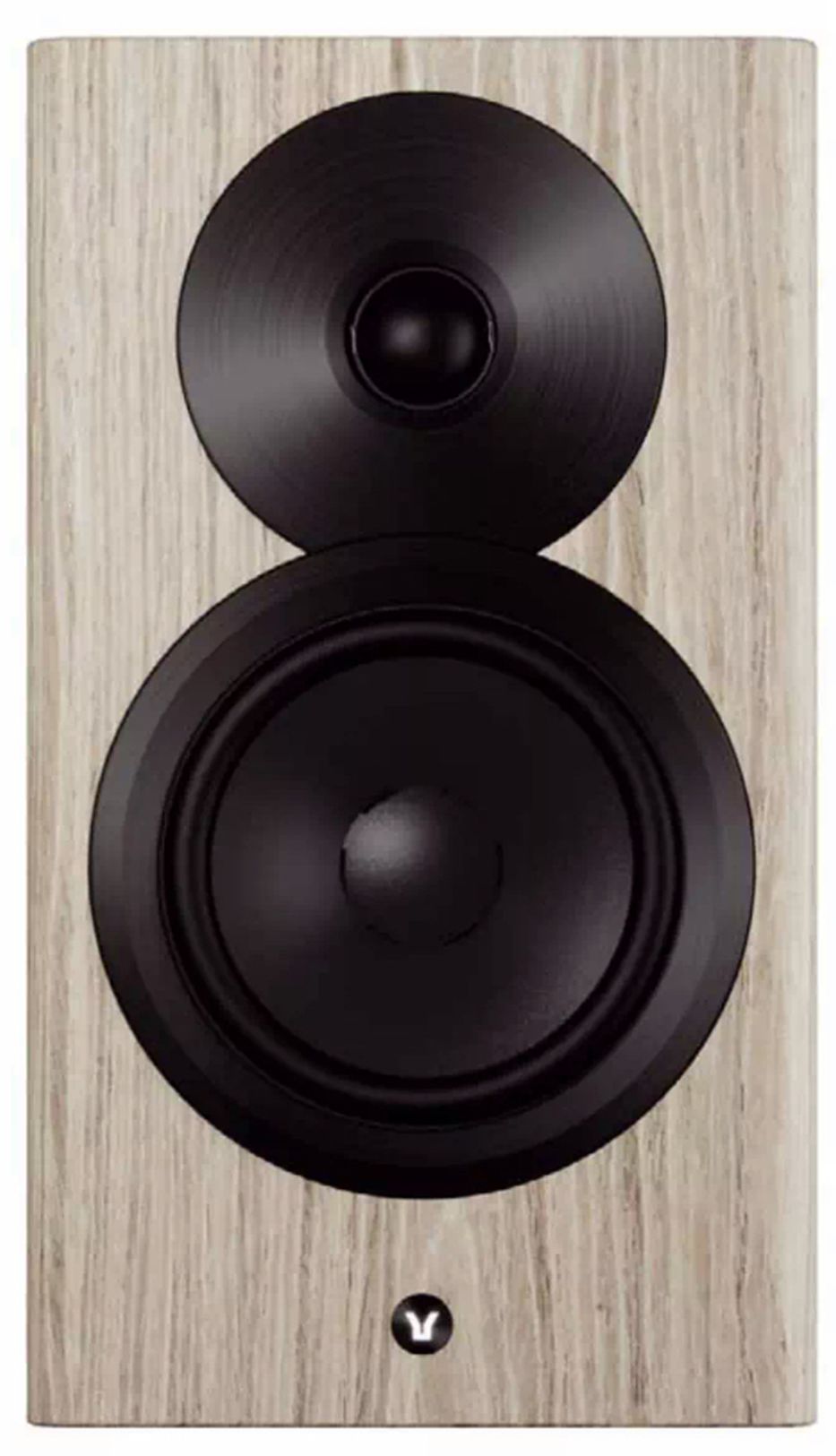

Specifications:
- Finishes: Black High Gloss, White High Gloss, Blonde Wood, Walnut Wood
- Dimensions (W x H x D): 180 x 315 x 261 mm
- Weight: 7.5 kg
- Principle: Active speaker, sealed
- Drivers:
- 1 x 14 cm Esotec+ midrange/woofer
- 1 x 28 mm Cerotar tweeter
- Frequency Response (+/-3dB at 85dB): 42 Hz – 22 kHz
- Crossover: 2-way, DSP-based
- Crossover Frequency: 2.2 kHz
- Analog Inputs: 2 x RCA
- Digital Inputs (Primary Speaker): 1 x Toslink, 1 x RCA; WiFi; WiSA; Bluetooth
- Outputs (Primary Speaker): 1 x RCA/Coax (connection to secondary speaker), 1 x RCA/subwoofer, 1 x Trigger
- Digital Inputs (Secondary Speaker): 1 x RCA/Coax (connection to primary speaker)
- Wireless Connection Between Speakers: WiSA (up to 24bit / 96kHz)
- Network: WiFi, Ethernet, Bluetooth
- Amplifier: 280 Watts (midrange/woofer), 110 Watts (tweeter)
Competitors
- KEF LS50 Wireless II: A highly regarded active speaker with built-in amplification, streaming capabilities, and advanced acoustic design. Known for its precise sound and modern features.
- Bowers & Wilkins Formation Duo: Part of B&W’s high-end Formation series, these wireless active speakers offer premium sound quality and seamless streaming, making them a direct competitor to the Dynaudio Focus 10.
- Sonus Faber Lumina II: While traditionally a passive speaker, Sonus Faber’s craftsmanship and sound quality make the Lumina II a competitor in terms of audio performance and design. Paired with appropriate amplification, it competes with the Focus 10.
- Elac Navis ARB-51: A high-quality active bookshelf speaker that combines advanced technology with refined sound, offering built-in amplification and wireless connectivity, similar to the Dynaudio Focus 10.
- Q Acoustics Concept 300: Although passive, the Concept 300 is known for its innovative design and exceptional sound quality. When paired with a suitable amplifier, it competes well with the Focus 10 in terms of audio performance.
Performance measurement
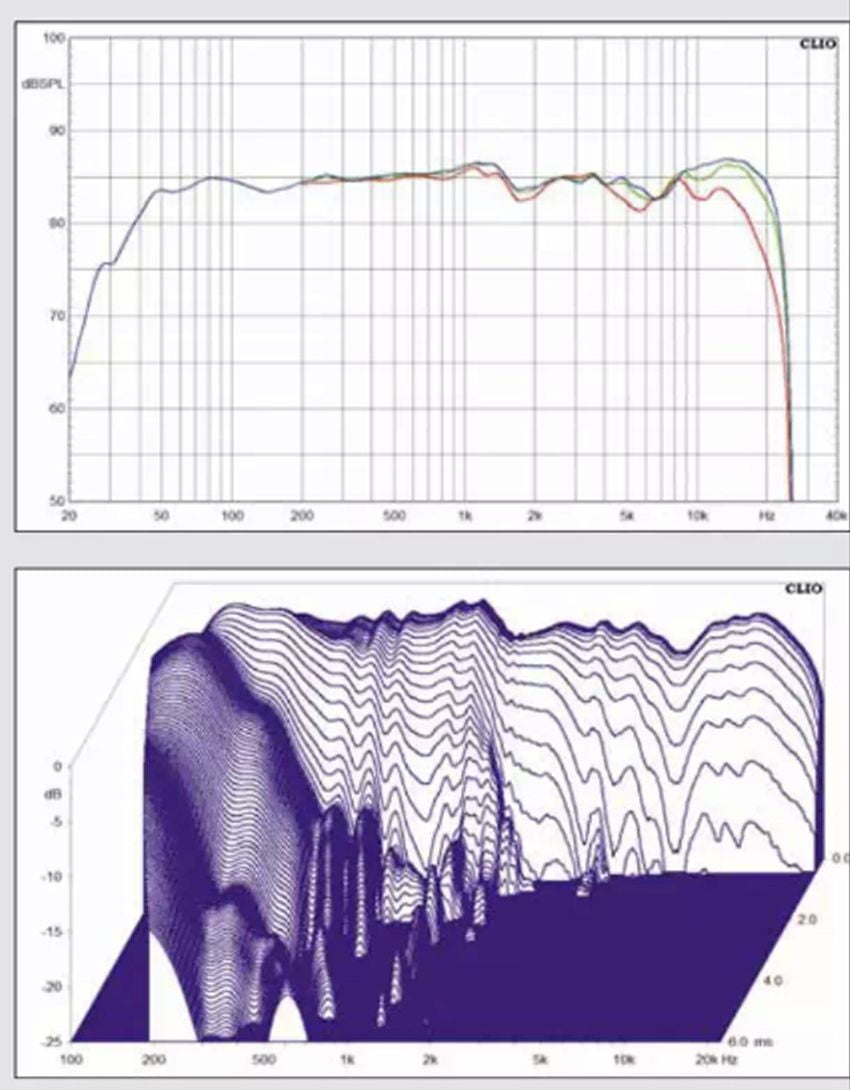
The Focus 10 exhibits a remarkably low cutoff frequency of 40 Hz for a speaker of its size, and continues with a very linear response, thanks to DSP support. The DSP, with its 48 kHz sampling rate, is also responsible for the sharp cutoff at 24 kHz. The decay spectrum reveals a very fast decay above 500 Hz, and above 1.5 kHz, it’s nearly perfect.
Ratings:
- Sound: 70% – 1.0
- Laboratory: 15% – 1.0
- Practical Use: 15% – 1.0
- Overall Rating: Outstanding functionality
- Price: 5,000 Euros (per pair)
Verdict
Dynaudio Focus 10 active streaming speakers with DIRAC
The most universal wireless active Dirac enabled speakers around Real wireless speakers are very limited in quality since they ...





